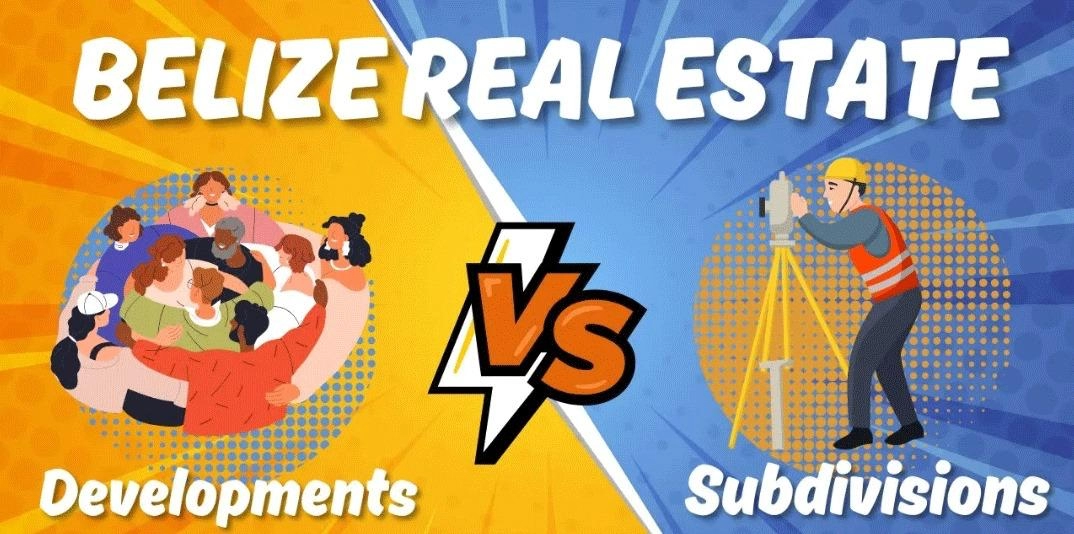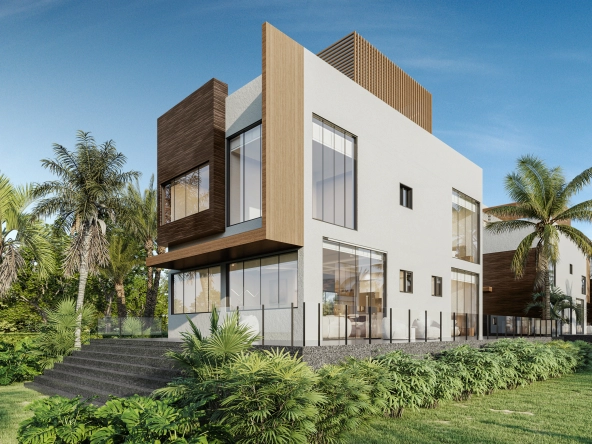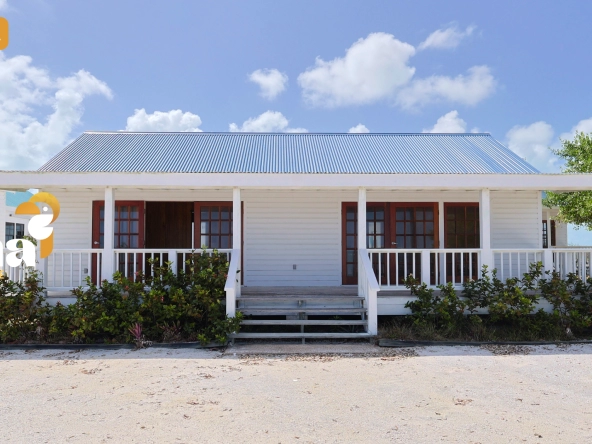Differences between Subdivisions and Developments
Investing in real estate in Belize offers a range of opportunities, from master-planned developments to simple subdivisions. But what exactly is the difference between these two types of properties? Understanding the key distinctions can help investors make informed decisions based on their long-term goals.
What is a Subdivision?
A subdivision is essentially a large tract of land that has been divided into smaller parcels for sale. The owner or developer of the subdivision typically surveys the land and sells individual lots without additional infrastructure, amenities, or management services.
Characteristics of a Subdivision:
- No community planning or amenities put in the by the developer
- Minimal infrastructure—may lack proper roads or utilities
- No mandatory bylaws or Covenants, Codes and Restrictions (CC&Rs)
- No maintenance fees or homeowners’ association (HOA) fees
- Green space allocated, as per the government requirement of 10% of the land being reserved, but there may not be any plans to do anything with it.
Subdivisions are ideal for investors who want a lower-cost entry into real estate, particularly those interested in land banking—purchasing land with the intention of holding onto it for future appreciation and resale. It could also be great for someone who does not want any CC&Rs, and wants the flexibility to build what they want.
What is a Development?
A development, on the other hand, is an intentional master-planned community designed and built by a developer. It includes well-thought-out infrastructure, amenities, and often an on-site management team to maintain the property and assist homeowners.
Characteristics of a Development:
- Carefully planned and built with specific designs
- Includes roads, utilities, and landscaping
- Features common areas such as parks, orchards, and community centers
- Governed by bylaws and/or CC&Rs to maintain property standards
- Typically has HOA or maintenance fees to cover upkeep and amenities
Developments appeal to buyers looking for a lifestyle-oriented community, preserved property values, and additional conveniences like security, maintained green spaces, and organized property management.
Key Differences between Subdivisions and Developments
-
Presence of a Developer and Infrastructure
Developments have an active developer overseeing the entire project, ensuring that infrastructure like roads, utilities, and green spaces are in place.
Subdivisions may only offer land without any infrastructure, leaving buyers responsible for arranging utilities and road access.
-
Rules and Regulations
Developments enforce CC&Rs to maintain the community’s aesthetic and property values.
Subdivisions usually have no restrictions, allowing owners to build whatever they want, but this can lead to unpredictable surroundings.
-
Costs and Fees
Developments charge HOA or maintenance fees for services like landscaping, security, and upkeep of community spaces.
Subdivisions do not have these fees—buyers only pay for land taxes and any costs associated with developing their own lot.
Case Study: Carmelita Gardens vs. Nearby Subdivision
A perfect example of these differences can be seen in two properties located across the street from each other in Cayo, Belize.
Carmelita Gardens (Development)
- A master-planned community established in 2010.
- Includes roads, river access, green spaces, and maintained parks.
- 20% of the land is allocated for community orchards and gardens.
- Offers in-house construction and maintenance services.
- HOA fee: $560 per year for upkeep of the property
- Available lots range from 1/8 acre to 1/2 acre, starting at $39,000.
To review the Properties of Carmelita Gardens check out here
Nearby Subdivision
- No designated green spaces or planned community areas.
- Poorly maintained roads, requiring a 4WD vehicle to navigate.
- No HOA or maintenance services.
- Lower cost—1/4 acre lots start at $25,000.
This comparison highlights the lifestyle benefits and long-term value that developments offer versus the lower upfront cost of subdivisions.
Which Option is Right for You?
The choice between a subdivision and a development ultimately depends on your investment goals:
- If you want to land bank and hold property for future appreciation, a subdivision may be ideal.
- If you prefer flexibility and lower ongoing costs, a subdivision may be more appealing.
- If you want a secure investment with clear property standards and amenities, a development is the better choice.
- If you value community planning, security, and management support, a development is more suitable.
Final Thoughts
Investing in Belize real estate requires a strategic approach, and understanding the differences between subdivisions and developments can help you make an informed decision. If you’re interested in owning property in Belize, reach out to our team at info@lunarealtybelize.com . Our experienced agents can guide you through the process and help you find the perfect property for your needs.
Explore your options and secure your piece of paradise today!
For more information, Watch our YouTube Video on the difference between subdivisions and developments for a simple explanation with visuals!





